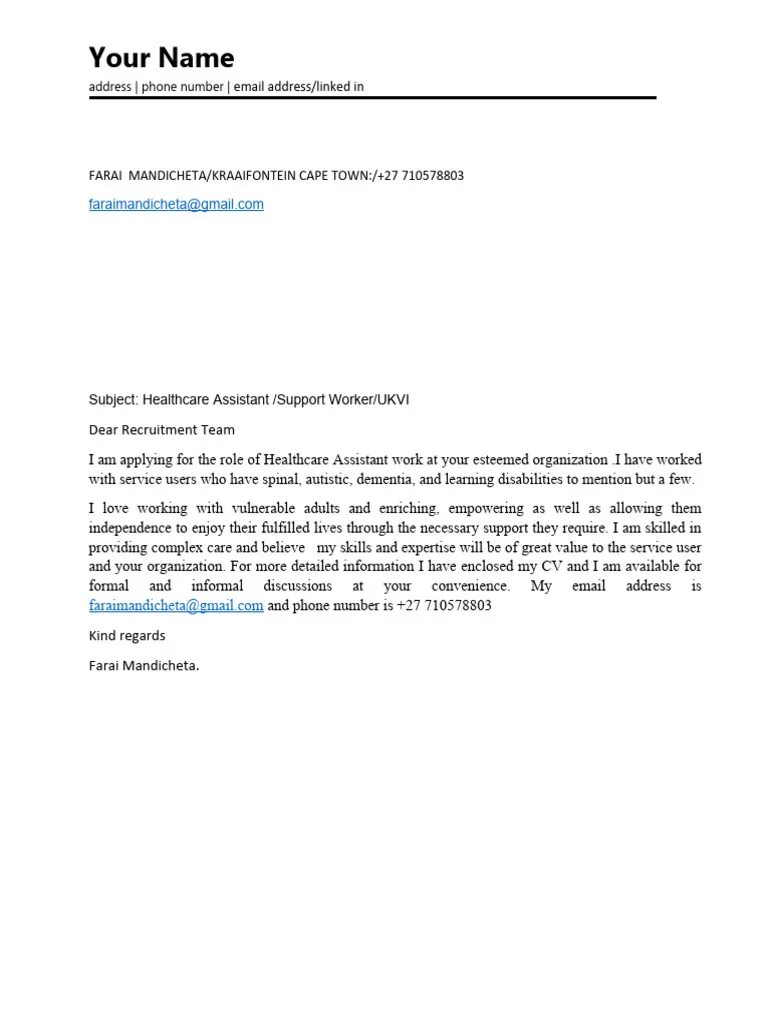What is a Cover Letter
A cover letter is a crucial document that accompanies your resume when applying for a job. It serves as an introduction to the hiring manager, providing context to your qualifications and expressing your interest in the position. Unlike a resume, which presents a factual summary of your skills and experience, a cover letter allows you to elaborate on your qualifications, showcase your personality, and demonstrate how your skills align with the specific requirements of the job. A well-crafted cover letter can significantly increase your chances of getting noticed and securing an interview, making it an essential part of any job application strategy. It is your opportunity to make a positive first impression and convince the employer that you are the right fit for the role and the company culture. A cover letter also demonstrates your communication skills and your ability to articulate your value proposition.
Why Do You Need a Cover Letter
In today’s competitive job market, a cover letter is not just optional it is a necessity. While a resume lists your skills and experience, a cover letter allows you to personalize your application and demonstrate your genuine interest in the specific role and company. It is an opportunity to connect with the hiring manager on a more personal level, showing them that you have taken the time to understand their needs and how you can contribute to their success. A cover letter provides the space to explain gaps in your employment history, highlight career transitions, and showcase your unique value proposition. Without a cover letter, your application might lack the context it needs to stand out from the crowd. It helps to differentiate yourself from other candidates, especially if you are applying for a position where the competition is fierce. It demonstrates your communication skills, attention to detail, and your ability to follow instructions, all of which are highly valued by employers.
Cover Letter 2017 Sample Analysis
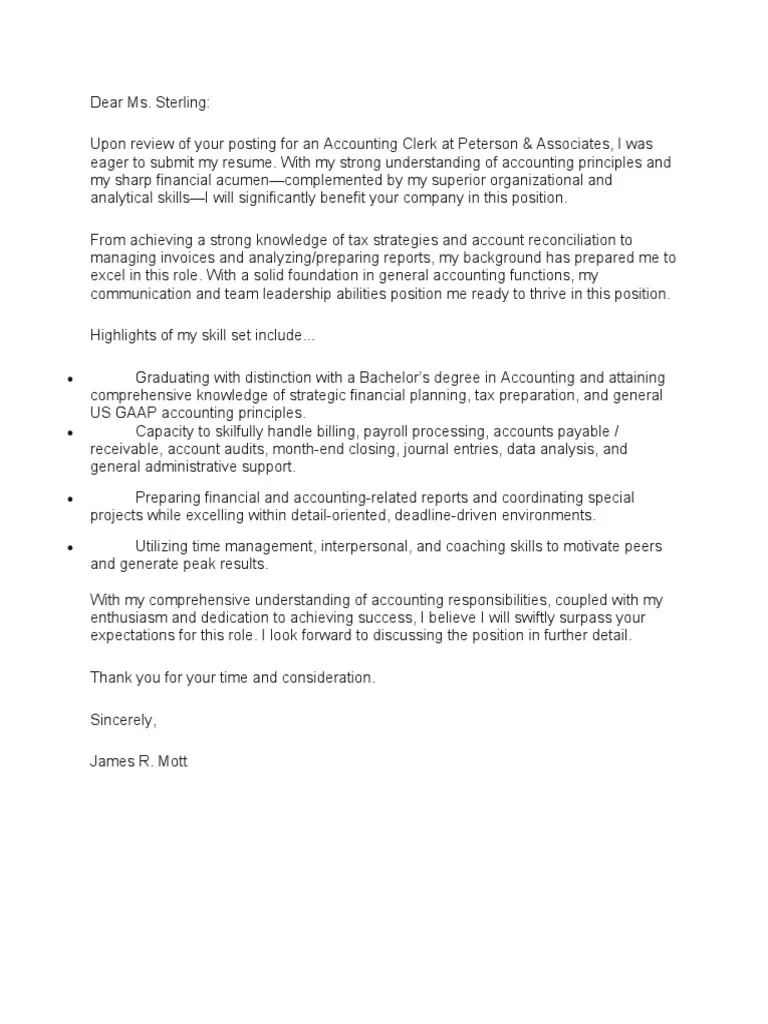
Analyzing cover letter samples from 2017 offers valuable insights into the best practices of the time, providing a glimpse into the expectations of hiring managers and the trends in job application strategies. Studying these samples allows you to understand the preferred formatting, language, and content that were effective in securing interviews and job offers during that period. Reviewing the structure and tone of these letters helps to identify the key components and their order. Analyzing 2017 samples also reveals the emphasis placed on certain skills and experiences, such as digital literacy, data analysis, and project management, which were becoming increasingly relevant. This analysis enables you to adapt and improve your cover letter writing skills, ensuring that your application stands out by incorporating the most effective strategies used in the past. This process can provide a benchmark for comparison, enabling a job seeker to assess strengths and areas for improvement.
Key Components of a 2017 Cover Letter
A successful 2017 cover letter, just like a modern one, comprised several key components designed to capture the hiring manager’s attention and convey your value. These components worked in unison to present a compelling case for your candidacy. The heading included your contact information, mirroring the structure of a professional resume. The greeting or salutation addressed the hiring manager directly, showing that you had researched the company and knew whom to address. The opening paragraph provided a brief overview of who you are, the position you are applying for, and a compelling reason for your interest. The body of the letter highlighted your relevant skills, experience, and achievements, and demonstrated how they aligned with the job requirements. The closing paragraph summarized your key qualifications and included a call to action, such as a request for an interview. Throughout the letter, the focus was on tailoring your message to the specific job and showcasing how you would be an asset to the company.
Heading and Contact Information
The heading of your cover letter is more than just a formality; it provides essential information to the hiring manager and ensures you can be easily contacted. It typically includes your full name, address, phone number, and email address. In 2017, it was common to include a professional-looking email address and a phone number where you could be easily reached. The placement of this information was usually at the top left or right corner of the document, allowing for easy readability. Make sure the contact information is current and accurate to prevent any missed opportunities. The heading should be well-formatted, using a clear and professional font that complements the rest of the letter. Avoid using creative or unusual fonts that might distract from the content of the letter. The heading ensures that the hiring manager has everything needed to reach out to you promptly and efficiently.
Greeting the Hiring Manager
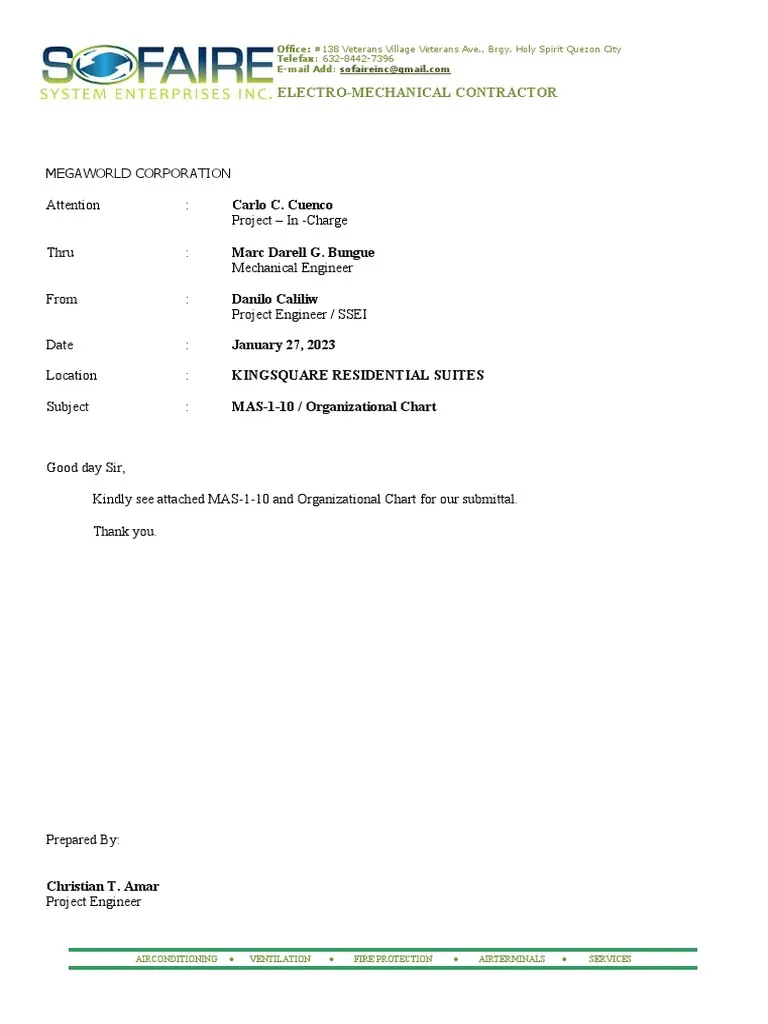
The greeting in your cover letter sets the tone for the rest of the communication and provides a personal touch. Addressing the hiring manager by name demonstrates that you have taken the time to research the company and the position, which can create a positive first impression. If the hiring manager’s name is not available, a generic greeting, such as Dear Hiring Manager or Dear [Company Name] Hiring Team, is a viable alternative. In 2017, using a formal greeting was still the standard. Make sure you double-check the correct spelling of the hiring manager’s name and title. Avoid using casual greetings like ‘Hey’ or ‘Hi,’ as they can make your application appear unprofessional. The greeting shows you’re attentive to detail, and the company’s investment in the application process.
Opening Paragraph Crafting an Engaging Start
The opening paragraph is your first opportunity to capture the hiring manager’s attention and encourage them to read the rest of your cover letter. It should be concise, engaging, and clearly state the position you are applying for. In 2017, a strong opening paragraph typically included a brief introduction of who you are, and why you’re a good fit for the role. Mentioning where you found the job posting also was a good practice, to show initiative. Tailoring the opening to the specific job requirements is crucial. Highlight a key skill or experience that immediately shows how you align with the company’s needs. The tone should be professional and enthusiastic, reflecting your genuine interest in the position. Avoid generic opening lines and instead, aim for a personalized and compelling start that grabs the reader’s attention. Make sure to keep the opening paragraph succinct and focused on the value you bring to the company. Aim to create curiosity and build an eagerness for the hiring manager to continue reading the rest of your cover letter.
Highlighting Your Skills and Experience
The body of your cover letter is where you showcase your skills and experience and demonstrate how they align with the job requirements. In 2017, this section was still crucial, especially considering the need to relate the experience with what the specific role would require. Emphasize the most relevant skills and experiences listed in the job description. Use specific examples to illustrate your accomplishments and demonstrate your ability to deliver results. Quantify your achievements whenever possible by using numbers and data to showcase the impact of your work. Tailor your examples to each job application, highlighting the skills and experiences most relevant to the position. Explain how your skills translate into tangible benefits for the company. Maintain a professional and confident tone throughout this section, and use active verbs to describe your actions and accomplishments. Present yourself as a highly qualified candidate by clearly and persuasively demonstrating how your skills and experience make you a good fit for the role.
Tailoring Your Letter to the Job Description
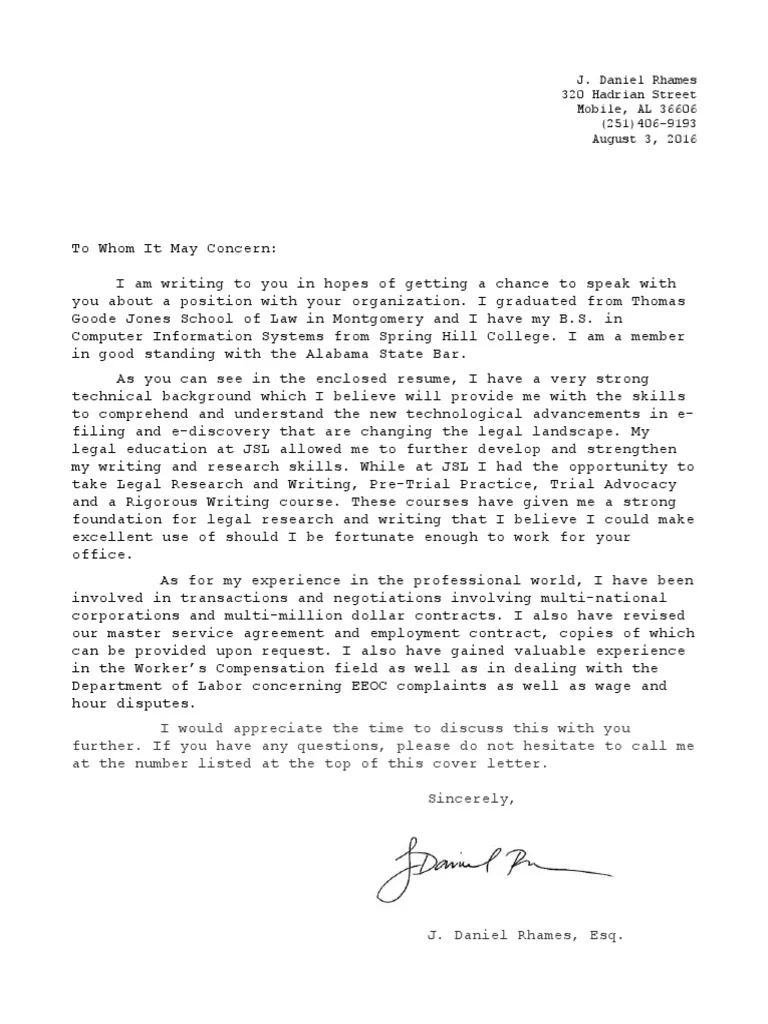
Tailoring your cover letter to the job description is essential for demonstrating your genuine interest in the role and your understanding of the company’s needs. A generic, one-size-fits-all cover letter will not impress hiring managers. Instead, carefully analyze the job description and identify the key skills, qualifications, and experiences the employer is seeking. Use these keywords throughout your cover letter, especially in the body of your letter, to highlight how your skills and experience align with those requirements. Give specific examples of how your skills have helped you achieve positive results in the past. Customize your letter to reflect the company’s values and culture. Make sure to address the specific needs and challenges of the company. By tailoring your cover letter, you show that you have done your research and are truly interested in the position, making your application more compelling and increasing your chances of getting an interview.
Quantifying Achievements Using Numbers
Quantifying your achievements using numbers is a powerful way to demonstrate the impact of your work and make your cover letter more persuasive. Using numbers and metrics adds credibility to your claims and shows that you have a clear understanding of your performance and the value you bring to the table. Where possible, use specific numbers and data to illustrate your accomplishments, such as the percentage of sales increased, the number of projects completed, or the amount of money saved. Avoid vague statements and instead, use measurable results to highlight your successes. Frame your accomplishments in terms of what you achieved and the positive outcomes you delivered. Quantifying your achievements makes your cover letter more compelling and helps you stand out from other applicants. Demonstrating your successes with verifiable data will leave a lasting impression on the hiring manager and increase your chances of getting an interview.
Demonstrating Your Enthusiasm
Demonstrating your enthusiasm for the position and the company is crucial for making a positive impression on the hiring manager. Your cover letter should reflect your genuine interest in the role and your desire to contribute to the company’s success. Express your enthusiasm in the opening paragraph, stating why you are excited about the opportunity. Use specific language to show your enthusiasm, and highlight aspects of the company’s culture or mission that resonate with you. Show you know the company’s goals and express how you see yourself contributing to these goals. Avoid using generic statements and instead, provide concrete examples. Your enthusiasm can make your cover letter more engaging and memorable, setting you apart from candidates who lack genuine interest. Make sure your enthusiasm is genuine and authentic, reflecting your passion for the role and the company.
Closing Paragraph and Call to Action
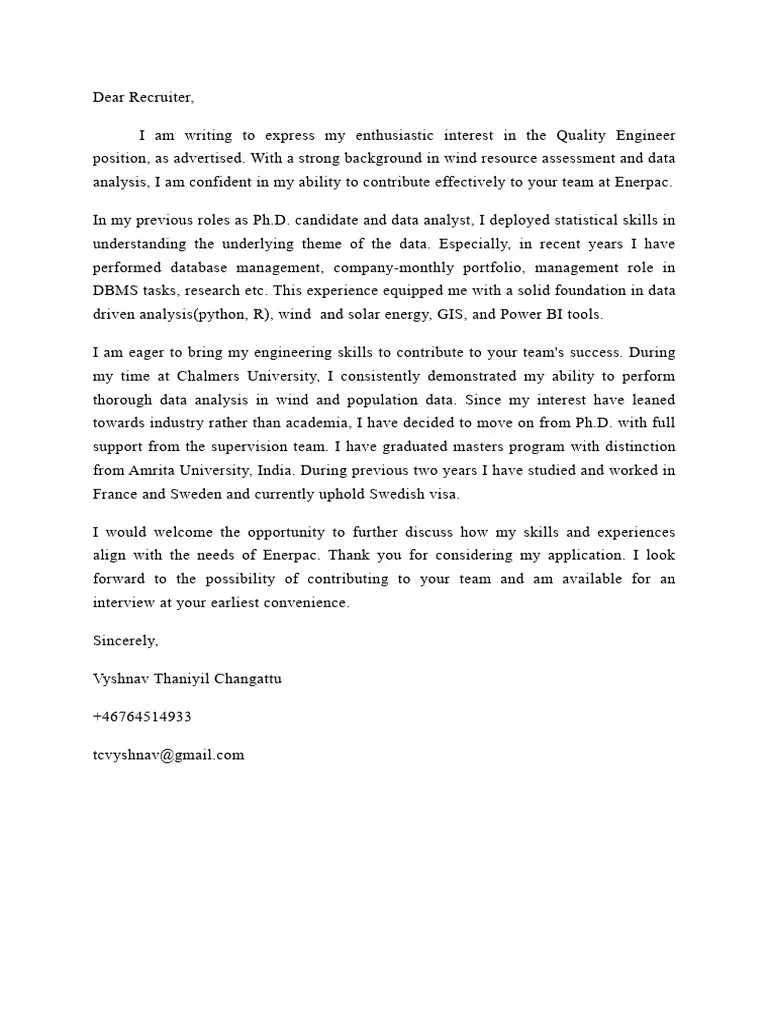
The closing paragraph of your cover letter should summarize your key qualifications and include a clear call to action. This paragraph provides a final opportunity to reiterate your interest in the position and encourage the hiring manager to contact you. Reiterate your value proposition by briefly summarizing your key skills and experience. Express your interest in an interview and make it easy for the hiring manager to take the next step. Include a call to action, such as ‘I am eager to discuss how my skills and experience can benefit your team,’ or ‘I look forward to hearing from you soon.’ Thank the hiring manager for their time and consideration, using a professional closing like ‘Sincerely’ or ‘Best regards.’ The closing paragraph and call to action are essential for concluding your cover letter on a positive note and encouraging the hiring manager to take the next step in the hiring process.
Proofreading and Formatting Tips
Proofreading and formatting your cover letter are critical steps to ensure that your application is professional, polished, and error-free. Even the most compelling content can be undermined by typos, grammatical errors, or poor formatting. Proofread your cover letter multiple times, ideally reading it aloud to catch any mistakes. Use a grammar checker to identify any grammatical or spelling errors. Check your cover letter for consistency in formatting, such as font, font size, and spacing. Use a clear and readable font, such as Times New Roman or Arial. Ensure your cover letter is well-organized, with clear headings, concise paragraphs, and sufficient white space. Poor formatting and errors can damage your credibility and make you seem inattentive to detail. Before submitting your cover letter, carefully review it for any errors and inconsistencies.
Common Mistakes to Avoid in a Cover Letter
Avoiding common mistakes can significantly increase your chances of making a positive impression on the hiring manager. One of the most common mistakes is not tailoring your cover letter to the specific job description and company. Generic letters show a lack of interest. Avoid using clichés and generic phrases. Another mistake is focusing too much on yourself and not enough on the employer’s needs. Avoid spelling and grammatical errors, as these can detract from your credibility. Be sure to avoid providing excessive information, such as irrelevant details or a lengthy description of your work history. Refrain from including negative comments about your previous employers or jobs. Following these guidelines can help you avoid common pitfalls and write a cover letter that showcases your qualifications and enthusiasm for the position.
2017 Cover Letter Samples for Different Industries
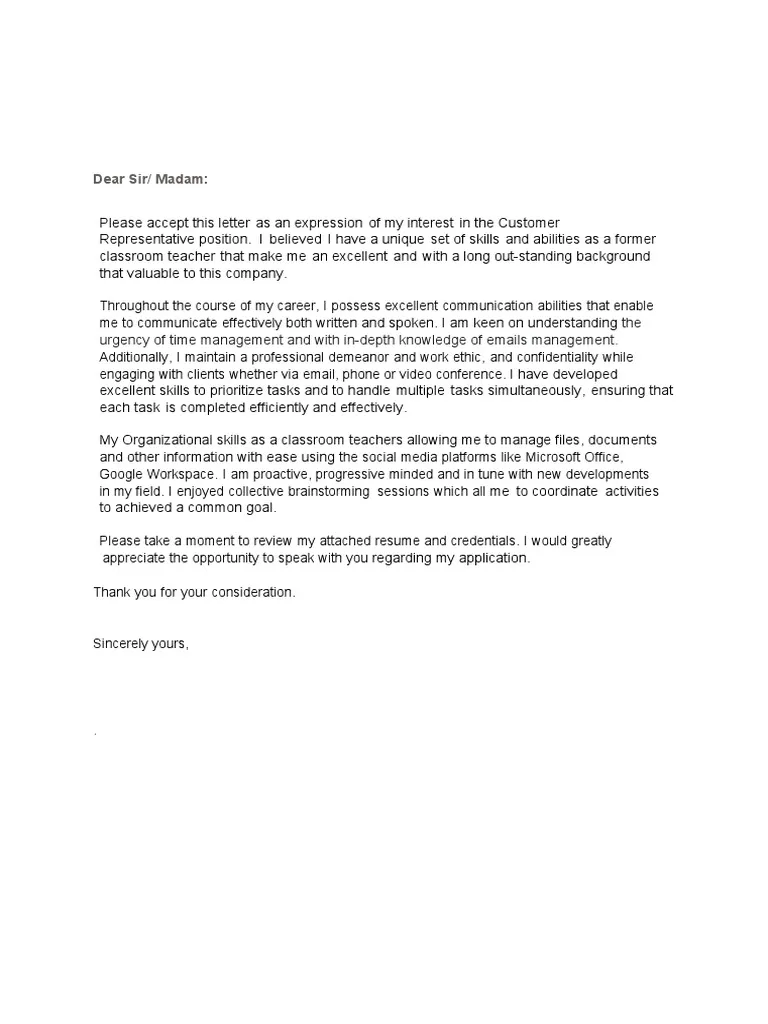
Reviewing cover letter samples from 2017, tailored for different industries, can provide invaluable insights into the expectations and preferences of hiring managers. These samples also provide detailed templates for each industry, which job seekers can use for themselves. The format and content of a cover letter vary depending on the industry. For example, a cover letter for a marketing position may focus on your creativity, communication skills, and understanding of marketing trends, while a cover letter for a software engineering position may highlight your technical skills and project experience. Consider samples for industries such as finance, healthcare, education, and technology, to understand the industry-specific trends. Adapt and tailor these samples to create a cover letter that perfectly matches your qualifications and the requirements of the job.
